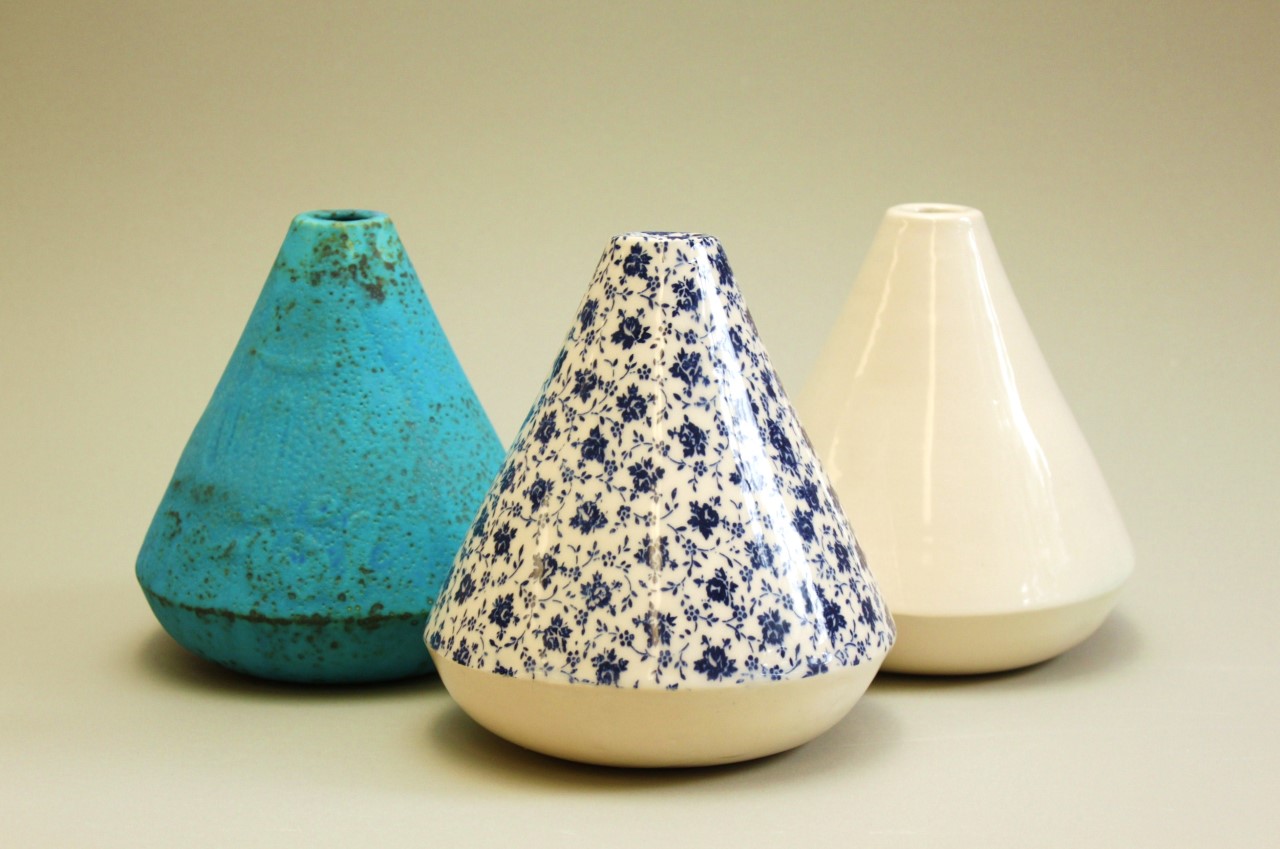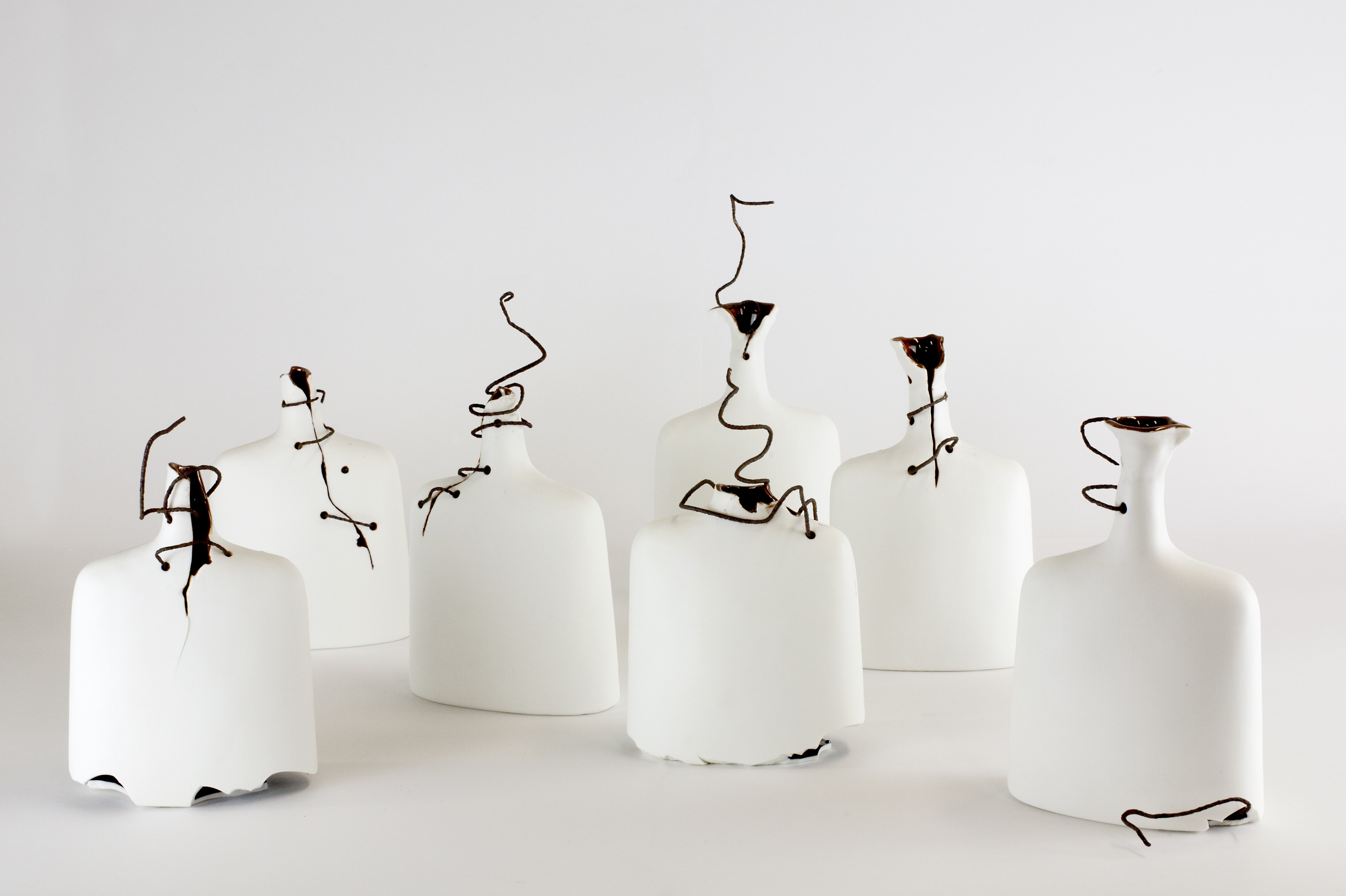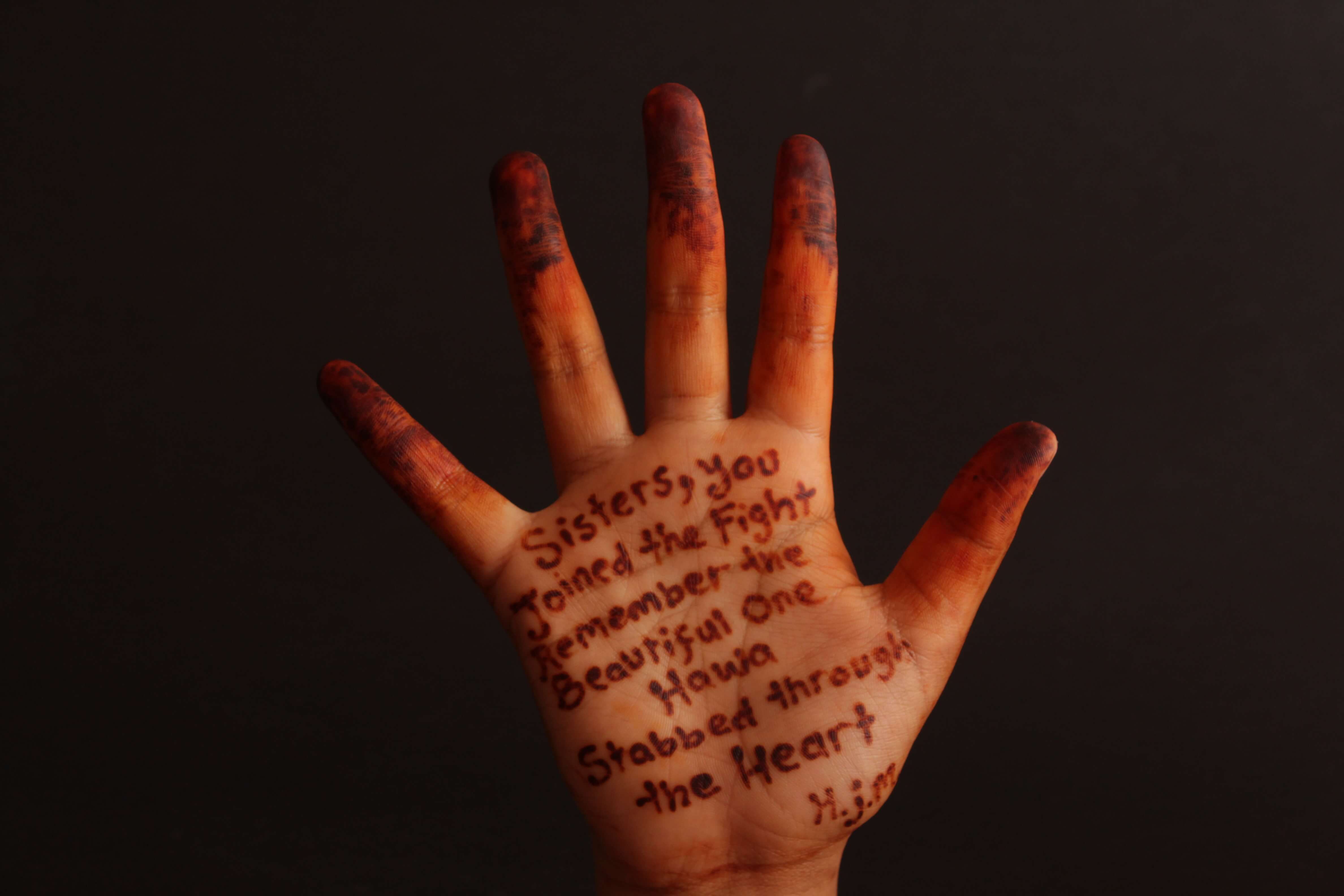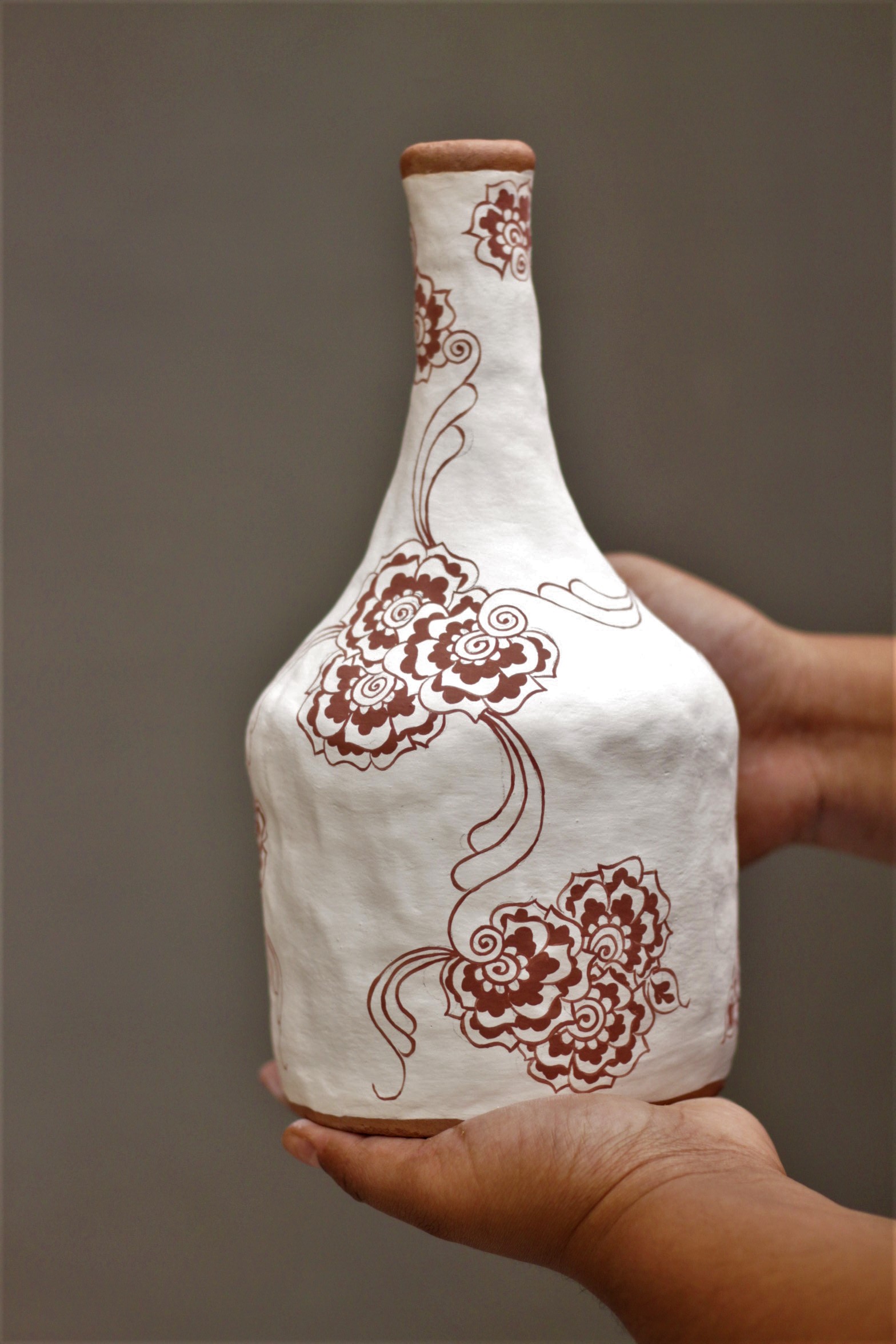 Written by System Administrator, Dec 2025
Written by System Administrator, Dec 2025
Muslim Arts Hub content writer, Natalie Bradvica, recently caught up with Idil Abdullahi over Zoom for some friendly laughs and reflections on artist residency programs.
Idil Abdullahi is a ceramic and henna artist who lives and works in Warrang/Sydney. She arrived in Australia as a refugee in 1993 with her family. Abdullahi has a Bachelor of Fine Arts from UNSW Art and Design, majoring in ceramics. In her creative practice, Abdullahi draws on symbols of faith and culture to examine personal and collective ideas of identity, belonging and separation. Abdullahi is also a community arts and cultural worker facilitating creative projects, mainly with women and youth from refugee or marginalised communities. She uses the visual arts to communicate ideas about issues that are significant to her and the communities she works with and to help build collective strength and resilience. Abdullahi is also part of eleven, a collective of contemporary Muslim Australian arts practitioners.

NB: Idil, thanks so much for joining me today. I’d like to chat about artist in residency programs, and reflect on your own experience with them. Coming from an art history background myself, I don’t really know much about artist in residency programs, but I have seen them advertised. So, let’s begin, by putting it simply: what exactly is an artist in residency program?
IA: They programs that provide opportunities for artists to live or work outside of their usual environments. It provides them with a space and time to reflect, or to get to know that space, do some research, to produce work, or even to experiment. For the hosting organisation, it's also an opportunity for them to bring in local artists, or to have outside artists engage with them and their community. It's a beneficial project for both the artist and the hosting organisation. Very similar to an exchange or study abroad program.
NB: You were the recipient of the Strathnairn artist in residency grant in 2015. What inspired you to apply for this opportunity?
IA: It was actually Belconnen Arts Centre in Canberra who had applied for a grant to fund the residency. I was approached by them because they wanted to connect more with their local community, especially with the Islamic Society of Belconnen. They saw my work - my ceramic work in particular - and were interested in inviting me to work with them. I was still really fresh out of art school when we put in our first application for funding. It wasn't successful, but we applied again a year later for the residency and a collaborative exhibition with the community.
Initially, my residency was supposed to happen at Belconnen Arts Centre, but because they didn't have a ceramics space, we decided to invite another organisation - Strathnairn Arts Association - who have many ceramics facilities. That's where my residency took place in the end. It's located on the outskirts of Canberra and has beautiful, stunning views. There were kangaroos and horses walking about. It was really magical.

NB: How did you know this opportunity was right for you as an artist?
IA: My art practice has a strong community engagement component. When this project was pitched to me, it had that; a real engagement with the community. So, it had the right mix for my own personal development but also that engagement which is part of my practice. I also never really worked on a project that was just for the Muslim community. I was really excited by that and really grateful for the opportunity. We even had an imam open our exhibition.
NB: Wow!
IA: Yeah, that was very special to me to have something from my faith and my culture represented there, and for the community as well. We know some of these art spaces can be really non-inclusive, so that was really special, that they are actually doing something about engaging their community in a real way. That’s why I said yes, I want to be part of this.
NB: Understandably, artist in residency programs will vary between different host centres, but can you tell me about what sort of activities you did at Strathnairn? What are some general expectations that an artist can have when going into an artist in residency program?
IA: In terms of the process, I didn't have to do an individual proposal; it was a joint proposal that I contributed to. I had guidance if I didn't understand something or if something was missing. I did write the usual intent letter and included my bio, CV, and images of my work.
Different places have different expectations and outcomes for themselves and for the artist. For my residency, we did hash out a bit of a plan and a timeline. During my residency, I mostly got to know the place and reflected on that, as well as familiarising myself with the centre and the community. I did a bit of research and experimentation. I also did the community engagement at that time since I was physically there. When you get into the program, it’s just having a look at the expectations and if they’re aligned with what you’re interested in as well.
My highlight was the community workshops and engagement part. Even though it was aimed at young people, the parents joined in as well, and there was a great turn out.
NB: How exciting! That would've been a really affirming achievement, especially since you didn't have much creative work experience because you just finished studying.
IA: Absolutely. I had facilitated workshops before, so I know the effort it takes to bring the community out to art spaces and making it accessible for them. I was really grateful to work with the Muslim community who spread the word and who brought the participants there. I was really happy.

NB: You've just shared a highlight with me, but what was the most challenging part of your residency?
IA: I became a little unwell during the residency. I think I underestimated how long the recovery would be. Because it was at the beginning of my career and my first residency outside of Sydney, I really felt too shy at the time to let the team know, and I was worried it would mess up the timeline. So, I just pushed through it. In the end, I wasn't really 100% satisfied with my energy because I wasn't there 100% myself. Self-care is so important in maintaining an art practice, and I learnt that the hard way. Now, I'm quite upfront about anything to do with that, but at the time, I was really shy.
NB: It sounds like you found assertiveness with being able to say, 'my health is important. I'm important. My art can pause. Let's take a break.'
IA: Yeah, and one thing I'm really grateful for is that the area was beautiful. That honestly did assist in my wellbeing as well. It was really quite peaceful. Sometimes, I was like, am I on a retreat here? *Laughs*.
Even though I had this timeline and things to do, I was still quite autonomous and did things on my own.
NB: How do you feel your residency at Strathnairn shaped your art practice as it is now?
IA: I think, for me, it reaffirmed that emphasis on community engagement in my practice. At the beginning, when you finish art school, you don't really know where to place yourself because you might not have that same guidance. You think, 'I might want this, but I don't really know how to go about it or how to make it part of my art practice.' Going through the residency validated those thoughts for me.
Because I learnt so much from the youth I engaged with and the artists who shared the studio with me, I have made some lasting connections. To me, that has probably been the biggest impact: those connections and interactions. It let me know that I don't create alone; it is a collective effort. All artmaking is interacting and responding to others.
NB: Doing this residency interstate would've increased your confidence as an artist; being able to put yourself out there, meet new people and make new connections, as you said.
IA: Definitely. It's like, yeah, I can do this. I'm really shy and don't really go out there and get myself known, so it was lovely to see how it can be done, and how it can impact and contribute to you as a person and your work as well.

NB: Would you like to undertake another residency in the future?
IA: Yes, yes, absolutely! My daughter is grown now. After you and I first spoke through email, I started looking at NAVA and Art Almanac to see what opportunities are out there. So, inshaAllah [God willing], I really hope to find another residency that's right for me very soon. It definitely reinvigorates your practice. There's so many things that, when you're in your own world, you don't get to see. Even just being in a different environment is vital.
NB: I feel like a lot of artists will potentially be looking at residencies since we’ve been confined to our homes for so long. It seems like a lot of artists will want that change of scenery over the next 6-12 months.
IA: Absolutely. And, for someone like me as well, there are people who might not actually have a studio space or a place in their home where they create. So, for them to have that freedom, you know, to say, this time is just for creating and you don’t have to do the house work, *laughs*, that is really precious. I can imagine, for sure, residencies becoming more popular.
NB: Do you have any advice you’d like to give artists out there who are currently dipping their toes into these exciting waters of residency programs?
IA: Yes. I would like to say, honestly, it's never too early. Don't wait until the deadline. Connect with the centres or organisations that you're interested in and would like to host you. Also, research and cast a wide net, because you never know where you'll get a favourable response.
Another thing I would like to stress is - something I didn't know at the beginning - residencies are not all about making new work, so you don't have to feel pressured that you have to create a new body of work. It could just be about wanting to experiment, research; it could just be about reflecting or immersing yourself in a new environment with no set outcome and to see how that influences your artmaking and you in general.
Think about what you want out of the residency. Brainstorm and write it down. Create some plans, but be a little bit flexible with it because you never know what'll happen and what other opportunities are there.
I will also stress something which I didn't do at the beginning but now do regularly, is don't be afraid to ask for feedback or advice from other artists who have done residences, or even from the centre where you are interested in having the residency. If it's a local space, try to do it face-to-face rather than through email because I think that's far more lasting, and when you connect with people, it just resonates more differently.
And, all the best of luck!

Images 1, 2, 4 and 5: Courtesy of the artist. Image 3: Equilibrium Design.